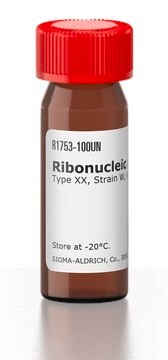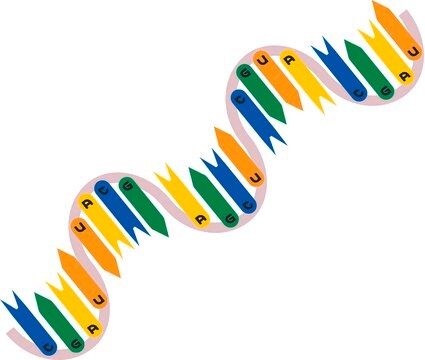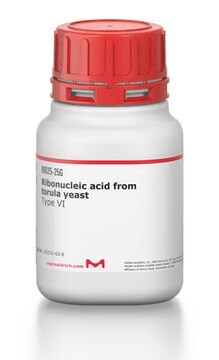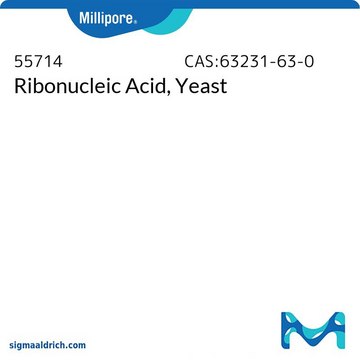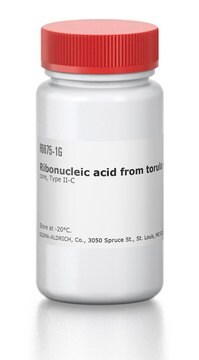R9001
Ribonucleic acid, transfer from baker′s yeast (S. cerevisiae)
Type X, lyophilized powder
Synonym(s):
Transfer RNA, tRNA
Sign Into View Organizational & Contract Pricing
All Photos(1)
About This Item
Recommended Products
grade
for molecular biology
type
Type X
form
lyophilized powder
storage temp.
−20°C
Looking for similar products? Visit Product Comparison Guide
General description
Transfer RNA (tRNA) is isolated from baker′s yeast by phenol-chloroform extraction and ethanol precipitation.
Application
Suitable for use as a carrier in nucleic acid purification and precipitation.
Components
tRNA is provided as a lyophilized powder.
Related product
Product No.
Description
Pricing
Storage Class
11 - Combustible Solids
wgk_germany
WGK 3
flash_point_f
Not applicable
flash_point_c
Not applicable
ppe
Eyeshields, Gloves, type N95 (US)
Certificates of Analysis (COA)
Search for Certificates of Analysis (COA) by entering the products Lot/Batch Number. Lot and Batch Numbers can be found on a product’s label following the words ‘Lot’ or ‘Batch’.
Already Own This Product?
Find documentation for the products that you have recently purchased in the Document Library.
Customers Also Viewed
Mammalian in vitro splicing assays.
A Mayeda et al.
Methods in molecular biology (Clifton, N.J.), 118, 315-321 (1999-11-05)
Sean P Ryder et al.
Methods in molecular biology (Clifton, N.J.), 488, 99-115 (2008-11-05)
The gel mobility shift assay is routinely used to visualize protein-RNA interactions. Its power resides in the ability to resolve free from bound RNA with high resolution in a gel matrix. We review the quantitative application of this approach to
Christophe Maris et al.
Nucleic acids research, 48(8), 4521-4537 (2020-03-15)
The polypyrimidine tract binding protein (PTB) is a multi-domain protein involved in alternative splicing, mRNA localization, stabilization, polyadenylation and translation initiation from internal ribosome entry sites (IRES). In this latter process, PTB promotes viral translation by interacting extensively with complex
A simplified method for combined immunohistochemistry and in-situ hybridization in fresh-frozen, cryocut mouse brain sections.
Newton, S.S., et al.
Brain Res. Protoc., 9, 214-214 (2002)
Crystal E Fagan et al.
Proceedings of the National Academy of Sciences of the United States of America, 110(24), 9716-9721 (2013-05-01)
After four decades of research aimed at understanding tRNA selection on the ribosome, the mechanism by which ribosomal ambiguity (ram) mutations promote miscoding remains unclear. Here, we present two X-ray crystal structures of the Thermus thermophilus 70S ribosome containing 16S
Our team of scientists has experience in all areas of research including Life Science, Material Science, Chemical Synthesis, Chromatography, Analytical and many others.
Contact Technical Service


